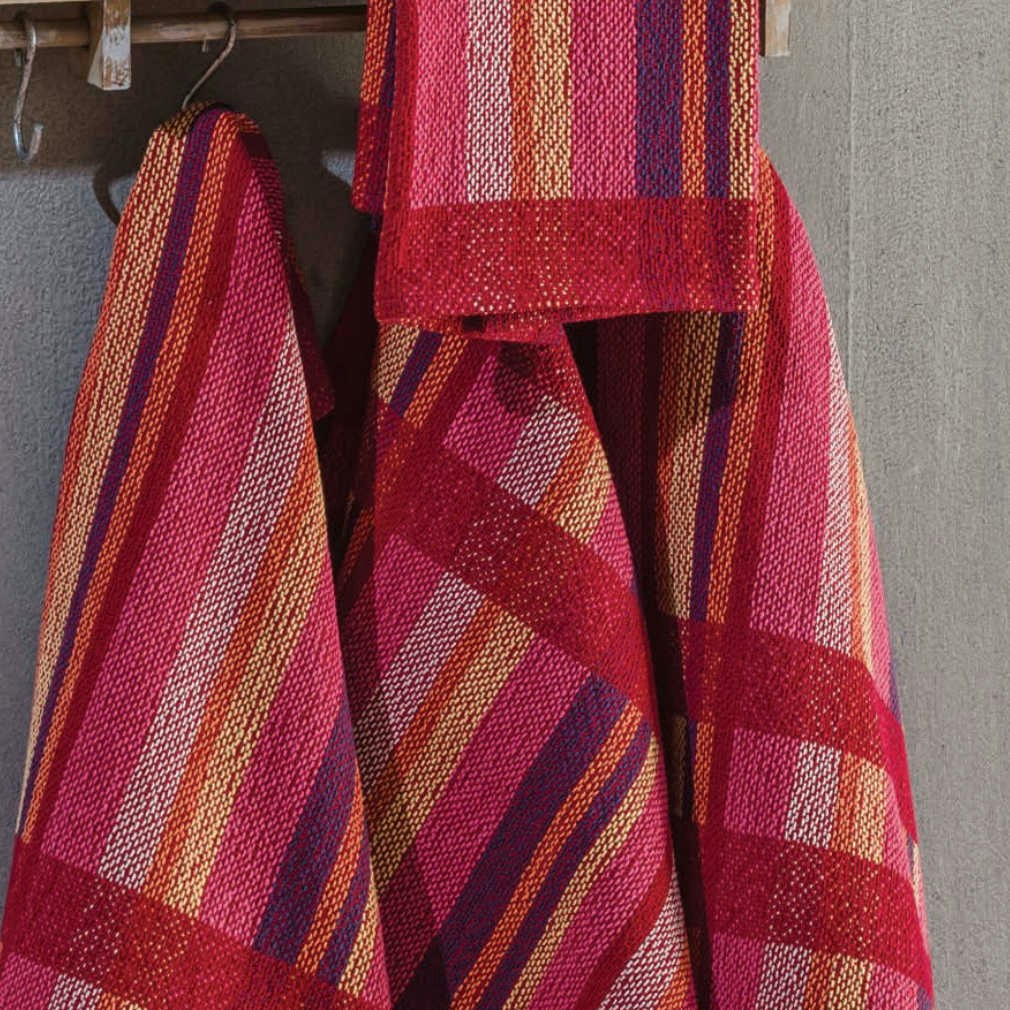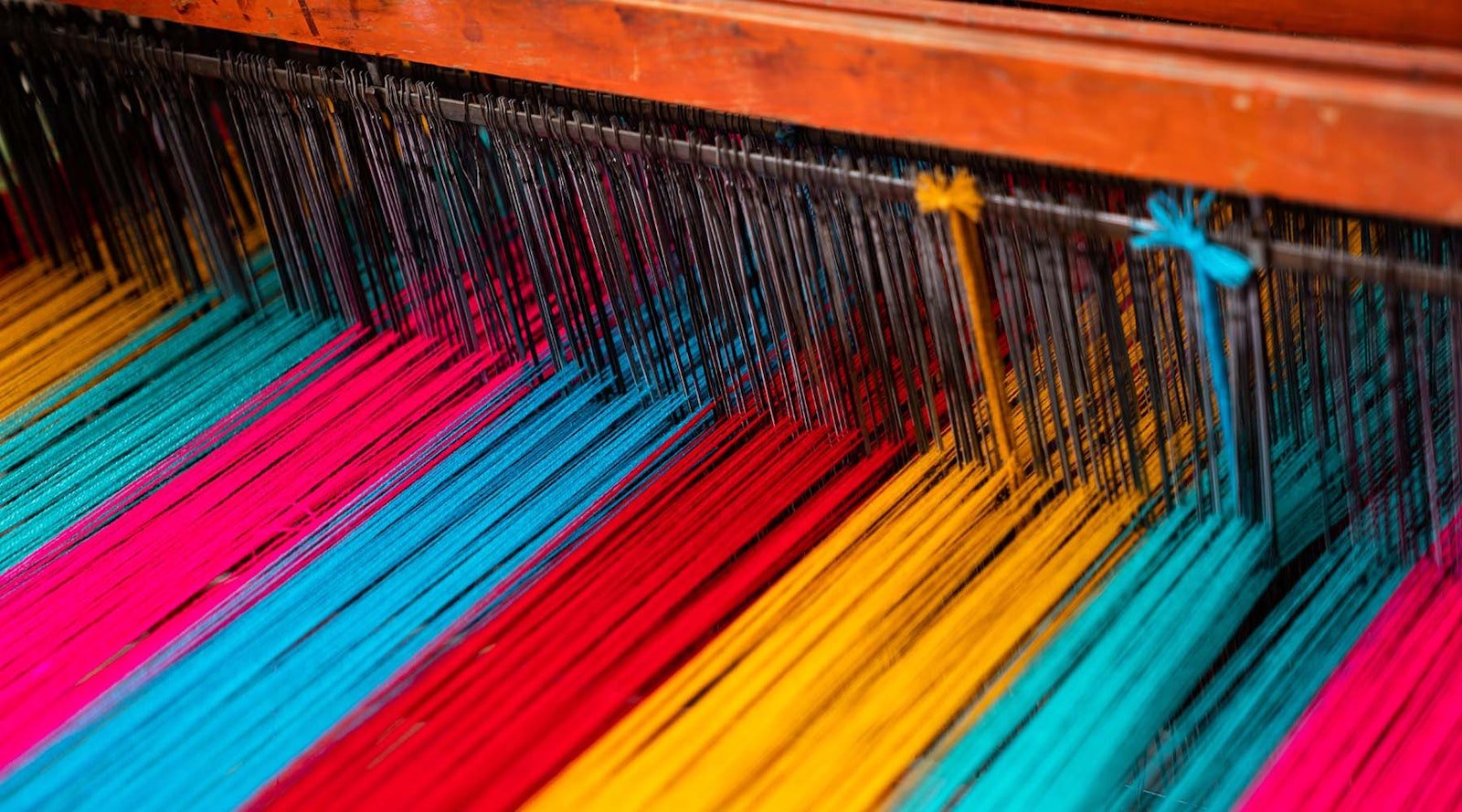Recently we received an email from a reader who wanted to know how she could make a project woven on a loom wider than hers work on her home loom. While answering her question, I realized it’s been a while since we covered this topic (if ever!), so I thought I’d share my approaches to narrowing projects to fit the loom you have. First a disclaimer: I’m not talking about reducing extra-large weavings, such as 42" blankets and throws, to fit much narrower looms. I’m talking about pieces where the difference would be probably 6" or less.
When I want to weave a narrower version of a specific Handwoven project, I look first at the number of ends in each repeat in the tie-up. Let’s start with an easy hypothetical project and pretend it’s a project woven in Finnish twill/Ms and Ws using 8/2 cotton sett at 24 ends per inch (epi). The towels are woven 24" wide, but we need to make them weavable on a 22" loom. Each pattern repeat is made up of 22 ends so sett at 24 epi, that means each pattern repeat is just less than an inch. So if we need to remove 2 full inches from of the original towel, then we can just cut 3 pattern repeats (66 ends) and the new draft will be just over 21".

Sarah Jackson’s Gee’s Bend Towels. Photo by Joe Coca
Of course, not all projects have small repeats or even any repeats at all. Take Sarah Jackson’s Gee’s Bend Towels from the March/April 2016 Handwoven. The stripes are all random sizes and colors. When trying to narrow a project with random patterning in the warp, I again look first at sett, in this case 20 ends per inch. Depending on how much I need to cut off the width, I might look at the pattern and see whether:
- I can remove whole stripes from the outer edge
- I can make some or all the stripes slightly narrower
- I need to cut stripes from the middle as well
It can take some trial and error, and I find using either weaving software or some graph paper and colored pencils is absolutely necessary.
Then there are cases where there are no repeats because the design goes the whole length of the piece, cases where the few repeats that do exist can’t be cut because it would take away from the symmetry of the piece, and cases where the repeats are so large that cutting one would result in a piece far too narrow. In these instances, there isn’t an easy one-size-fits-most answer. For some weave structures, such as summer and winter or overshot, you can reduce the block sizes, or even reduce some and enlarge others, as long as what you do to one side equals what you do to the other if you want symmetry.
Another option is using finer sett threads in the warp and weft—subbing a 10/2 cotton for an 8/2 cotton, for example. You’ll want to make sure it doesn’t reduce your width too much, but I’ve found adding to a too-narrow design is often easier than taking away. When dealing with extra-large repeats, I find removing one repeat and then adding a border on either side can help make up for too much width lost. No matter what, using weaving software (or at least graph paper) is an invaluable way to see how your changes will affect the final design so you can easily adjust until you get exactly what you want.
While you might not be able to reduce every design to work with your loom width, for most pieces, it is possible. It might take some trial and error on graph paper or your computer, but, in my experience, the planning of a piece is half the fun.
Happy Weaving!
Christina

